 Althogh not yet quite as well-known as his peers, Paul Jebanasam is an integral part of Bristol's Subtext Recordings milieu, a loose cadre of erstwhile dance producers who have now moved onto far more conceptual and abstract art.  While it is not uncommon for Subtext releases (this one included) to sound cringe-inducingly pretentious and/or overly grandiose on their face, the reality is that artists like Emptyset, Roly Porter, and Jebanasam are currently making (or at least trying very damn hard to make) some of the most ambitious and forward-thinking art in the experimental music scene.  Admittedly, Continuum shares a lot of common ground with other artists like Tim Hecker, Johann Johannsson, and Ben Frost, but it does not feel derivative so much as it seems like Jebanasam heard the mangled organs of Ravedeath, 1972 and thought "Not a bad start, but it really should have gone much further."
Althogh not yet quite as well-known as his peers, Paul Jebanasam is an integral part of Bristol's Subtext Recordings milieu, a loose cadre of erstwhile dance producers who have now moved onto far more conceptual and abstract art.  While it is not uncommon for Subtext releases (this one included) to sound cringe-inducingly pretentious and/or overly grandiose on their face, the reality is that artists like Emptyset, Roly Porter, and Jebanasam are currently making (or at least trying very damn hard to make) some of the most ambitious and forward-thinking art in the experimental music scene.  Admittedly, Continuum shares a lot of common ground with other artists like Tim Hecker, Johann Johannsson, and Ben Frost, but it does not feel derivative so much as it seems like Jebanasam heard the mangled organs of Ravedeath, 1972 and thought "Not a bad start, but it really should have gone much further."
 On one hand, it is kind of astonishing that Andreas Brandal has not been covered on this site before, as the shape-shifting/multi-guised Norwegian experimentalist has been on the scene for more than two decades and has made plenty of excellent music covering an impressive amount of stylistic territory.  On the other hand, it makes absolutely perfect sense, as Brandal’s career is not unlike that of Machinefabriek: a seemingly constant and unrelenting stream of new projects, limited editions, and collaborations that no hapless fan (much less a casual listener) could possibly hope to keep up with.  I believe I personally have at least 8 Andreas Brandal albums at this point and I am certain that I do not have even the most tentatively grasp of the depth and scope of his discography: I have not just missed key album–I have missed entire genres.  I do know that I like him though and his newest release is an absolutely stellar one, occupying the unique nexus where heavy drone, languorous strings, and oversaturated Tim Hecker-esque textures wonderfully collide.
On one hand, it is kind of astonishing that Andreas Brandal has not been covered on this site before, as the shape-shifting/multi-guised Norwegian experimentalist has been on the scene for more than two decades and has made plenty of excellent music covering an impressive amount of stylistic territory.  On the other hand, it makes absolutely perfect sense, as Brandal’s career is not unlike that of Machinefabriek: a seemingly constant and unrelenting stream of new projects, limited editions, and collaborations that no hapless fan (much less a casual listener) could possibly hope to keep up with.  I believe I personally have at least 8 Andreas Brandal albums at this point and I am certain that I do not have even the most tentatively grasp of the depth and scope of his discography: I have not just missed key album–I have missed entire genres.  I do know that I like him though and his newest release is an absolutely stellar one, occupying the unique nexus where heavy drone, languorous strings, and oversaturated Tim Hecker-esque textures wonderfully collide.
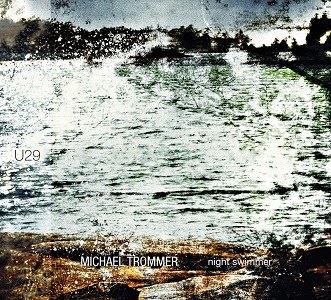 Like photographs, field recordings suggest unaltered reality. Suggests, not captures, because as in photography, there are artists who use field recordings for more than reproducing objective phenomena, if objectivity is even possible in the first place. Whether there’s an answer to that question, it at least points in the direction of impressionism and perspective, not just in visual productions, but in audible ones too. Whatever the medium, the artist brings more than a machine or a technique to the proceedings. Keeping with the comparison to photography, decisions about where to shoot and at what time, about exposure, and about dodging and burning all have parallels in field recording. They’re imprecise parallels, but they are clearly illustrated in the abstract shapes and bruised-blue colors of Michael Trommer’s Night Swimmer.
Like photographs, field recordings suggest unaltered reality. Suggests, not captures, because as in photography, there are artists who use field recordings for more than reproducing objective phenomena, if objectivity is even possible in the first place. Whether there’s an answer to that question, it at least points in the direction of impressionism and perspective, not just in visual productions, but in audible ones too. Whatever the medium, the artist brings more than a machine or a technique to the proceedings. Keeping with the comparison to photography, decisions about where to shoot and at what time, about exposure, and about dodging and burning all have parallels in field recording. They’re imprecise parallels, but they are clearly illustrated in the abstract shapes and bruised-blue colors of Michael Trommer’s Night Swimmer.
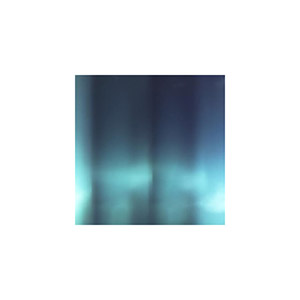 Quietly released between two major Mamiffer releases: last year's Crater with Daniel Menche and the upcoming The World Unseen, this limited cassette solo release from Faith Coloccia, under the name of M√°ra hopefully will not get lost in the shuffle. Surfacing is a sparse, intimate tape that showcases some of her contributions to the more dramatic Mamiffer sound and deserves just as many accolades as her better known "primary" project.
Quietly released between two major Mamiffer releases: last year's Crater with Daniel Menche and the upcoming The World Unseen, this limited cassette solo release from Faith Coloccia, under the name of M√°ra hopefully will not get lost in the shuffle. Surfacing is a sparse, intimate tape that showcases some of her contributions to the more dramatic Mamiffer sound and deserves just as many accolades as her better known "primary" project.
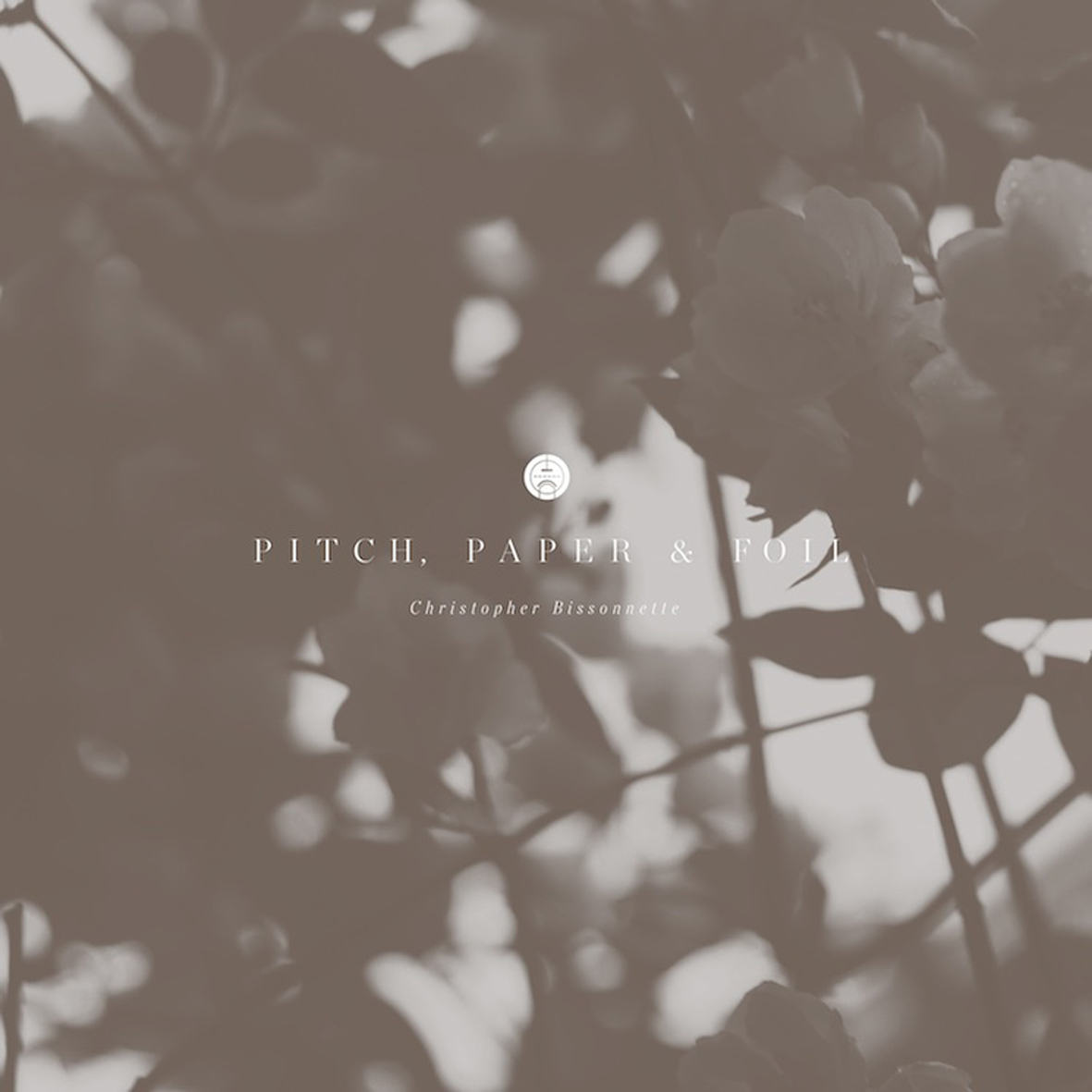 It occurred to me today that modular synthesizer albums are a lot like rodeos: it is immediately clear which cowboys are bad at riding broncos and which ones are good, but it is very rare for any of their individual personalities to come through while they are trying not to get bucked.  Despite only recently taking the plunge into modular synthesizer-centric composition with 2014’s Essays in Idleness, Bissonnette is one of the few artists able to transcend the limitations of that analogy.  While Pitch, Paper & Foil is not necessarily one of the best Christopher Bissonnette albums, it does boast a few of his best pieces and there is no question that this is a fruitful direction.  More importantly, Pitch still sounds unmistakably like Christopher Bissonnette, proving that the entropy of electronics is no match for Bissonnette's rigorous focus and control.
It occurred to me today that modular synthesizer albums are a lot like rodeos: it is immediately clear which cowboys are bad at riding broncos and which ones are good, but it is very rare for any of their individual personalities to come through while they are trying not to get bucked.  Despite only recently taking the plunge into modular synthesizer-centric composition with 2014’s Essays in Idleness, Bissonnette is one of the few artists able to transcend the limitations of that analogy.  While Pitch, Paper & Foil is not necessarily one of the best Christopher Bissonnette albums, it does boast a few of his best pieces and there is no question that this is a fruitful direction.  More importantly, Pitch still sounds unmistakably like Christopher Bissonnette, proving that the entropy of electronics is no match for Bissonnette's rigorous focus and control.
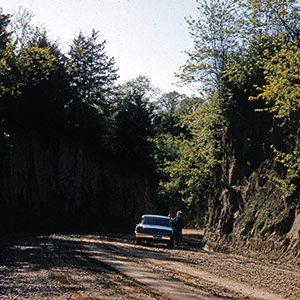 In many ways, these two recent albums (one physical, one digital only) are the quintessential works from Will Long’s Celer guise. Both Akagi and Soryu are expansive, lengthy single piece works that at times are so hushed and delicate to almost be imperceptible, yet they remain compelling and beautiful from beginning to end.
In many ways, these two recent albums (one physical, one digital only) are the quintessential works from Will Long’s Celer guise. Both Akagi and Soryu are expansive, lengthy single piece works that at times are so hushed and delicate to almost be imperceptible, yet they remain compelling and beautiful from beginning to end.
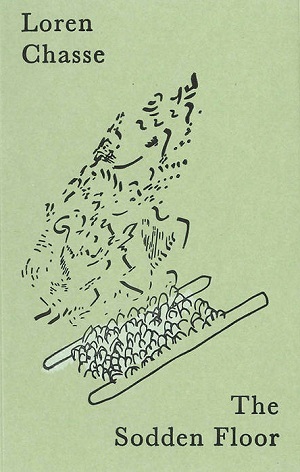 Presence and absence is a musically black and white affair. Either an instrument is present or it isn’t. A sound is buried in the mix or it’s up front and unavoidable. A recording can be clear or murky, not both, and though there are degrees of difference, those degrees exist exclusively on the presence side of the scale. The Sodden Floor, released last year by Loren Chasse in an edition of 100 cassettes, introduces shades of grey to that dichotomy. Over four songs, Chasse combines vaporous field recordings—of pipes, running water, stones, and humming glass—with abstract and sometimes eerie instrumental performances, on bells, drums, guitar, and melodeon. The low-key, atmospheric result is like listening to someone else’s dream. There’s heat and texture to the sights and sounds, but they are implied more than felt, veiled and kept out of reach behind layers of steam and oxidized memories.
Presence and absence is a musically black and white affair. Either an instrument is present or it isn’t. A sound is buried in the mix or it’s up front and unavoidable. A recording can be clear or murky, not both, and though there are degrees of difference, those degrees exist exclusively on the presence side of the scale. The Sodden Floor, released last year by Loren Chasse in an edition of 100 cassettes, introduces shades of grey to that dichotomy. Over four songs, Chasse combines vaporous field recordings—of pipes, running water, stones, and humming glass—with abstract and sometimes eerie instrumental performances, on bells, drums, guitar, and melodeon. The low-key, atmospheric result is like listening to someone else’s dream. There’s heat and texture to the sights and sounds, but they are implied more than felt, veiled and kept out of reach behind layers of steam and oxidized memories.
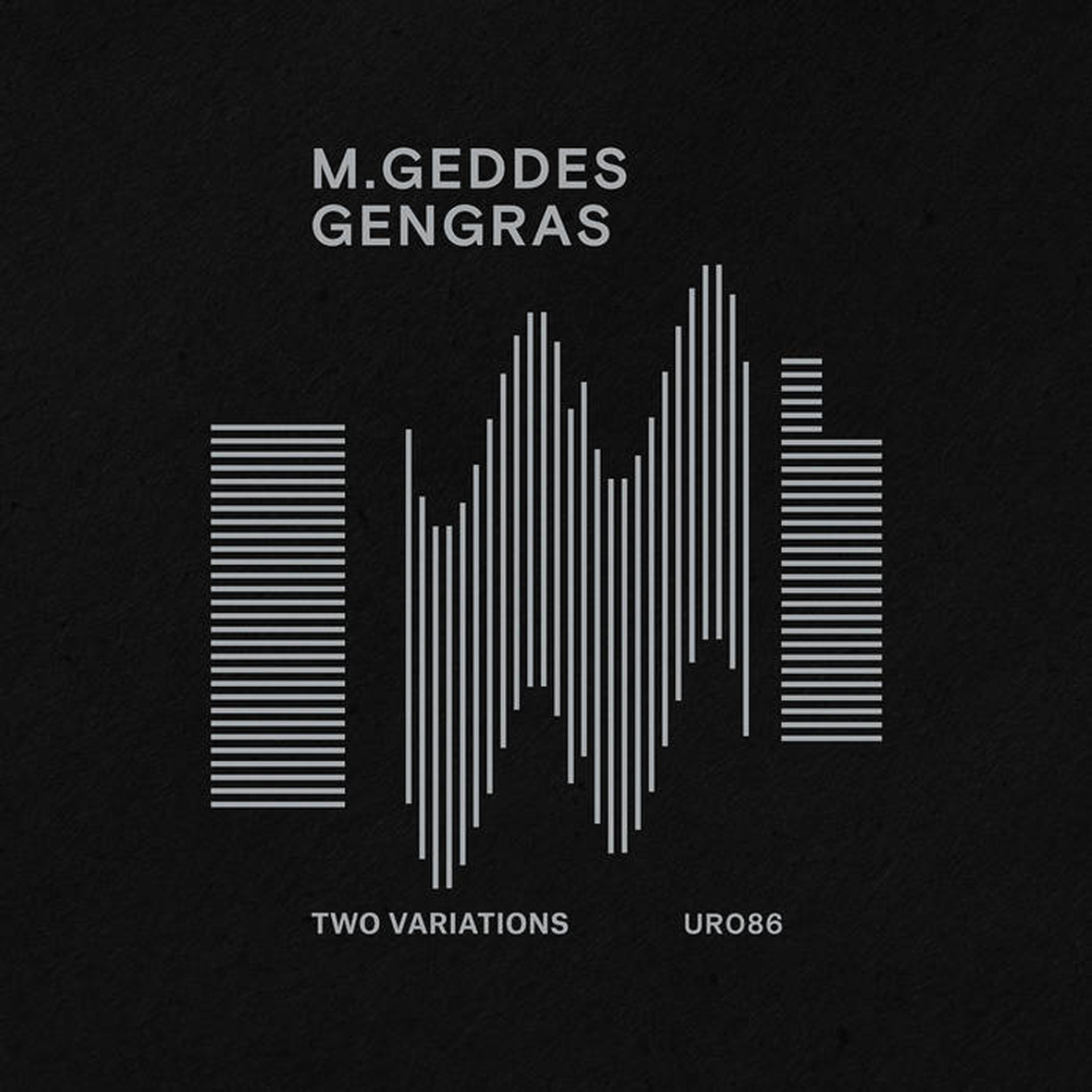 This latest release from LA's resident modular synth wizard continues Gengras's tradition of endless reinvention coupled with no small degree of tech-obsession.  Two Variations documents what are essentially three(!) variations of an elaborate and complex new patch that Gengras self-described as "two pairs of marimba mallets attached to a pair of dice."  While that might adequately summarize both the process and the degree of randomness involved, Two Variations still basically sounds exactly like a modular synthesizer album, albeit quite an inspired one, as these two extended pieces lie somewhere between sublime analog burbling and the antics of an especially unpredictable woodpecker.  Unfortunately, while the material is some of the strongest that Gengras has recorded in a while, Two Variations still feels more like a promising series of raw experiments than a definitive, perfected work in this new vein.
This latest release from LA's resident modular synth wizard continues Gengras's tradition of endless reinvention coupled with no small degree of tech-obsession.  Two Variations documents what are essentially three(!) variations of an elaborate and complex new patch that Gengras self-described as "two pairs of marimba mallets attached to a pair of dice."  While that might adequately summarize both the process and the degree of randomness involved, Two Variations still basically sounds exactly like a modular synthesizer album, albeit quite an inspired one, as these two extended pieces lie somewhere between sublime analog burbling and the antics of an especially unpredictable woodpecker.  Unfortunately, while the material is some of the strongest that Gengras has recorded in a while, Two Variations still feels more like a promising series of raw experiments than a definitive, perfected work in this new vein.
 One of downsides to living in the United States is that it is hard to keep up with all of the great limited-release or self-released albums that are continually emerging from the fringes of the UK’s experimental music underground.  While it is not terribly difficult to keep tabs on more established artists like Cyclobe, Nurse With Wound, Richard Skelton, or Current 93, it is very easy for an artist like, say, Áine O'Dwyer to remain under my radar for far longer than I would have liked.  Yet another fine example is this deeply inspired and beautiful homage to Jhonn Balance from early last year recorded by Phil Legard (Ashtray Navigations, Xenis Emputae Travelling Band) and his wife Layla.  While it predictably has some Coil-esque attributes (subtly hallucinatory electronics, a healthy interest in paganism), the Legards admirably transcend those nods by mingling them with their own passions for traditional/early music, yielding a unique strain of ritualistic-sounding rural psychedelia (and one of 2015's most slept-on great albums).
One of downsides to living in the United States is that it is hard to keep up with all of the great limited-release or self-released albums that are continually emerging from the fringes of the UK’s experimental music underground.  While it is not terribly difficult to keep tabs on more established artists like Cyclobe, Nurse With Wound, Richard Skelton, or Current 93, it is very easy for an artist like, say, Áine O'Dwyer to remain under my radar for far longer than I would have liked.  Yet another fine example is this deeply inspired and beautiful homage to Jhonn Balance from early last year recorded by Phil Legard (Ashtray Navigations, Xenis Emputae Travelling Band) and his wife Layla.  While it predictably has some Coil-esque attributes (subtly hallucinatory electronics, a healthy interest in paganism), the Legards admirably transcend those nods by mingling them with their own passions for traditional/early music, yielding a unique strain of ritualistic-sounding rural psychedelia (and one of 2015's most slept-on great albums).
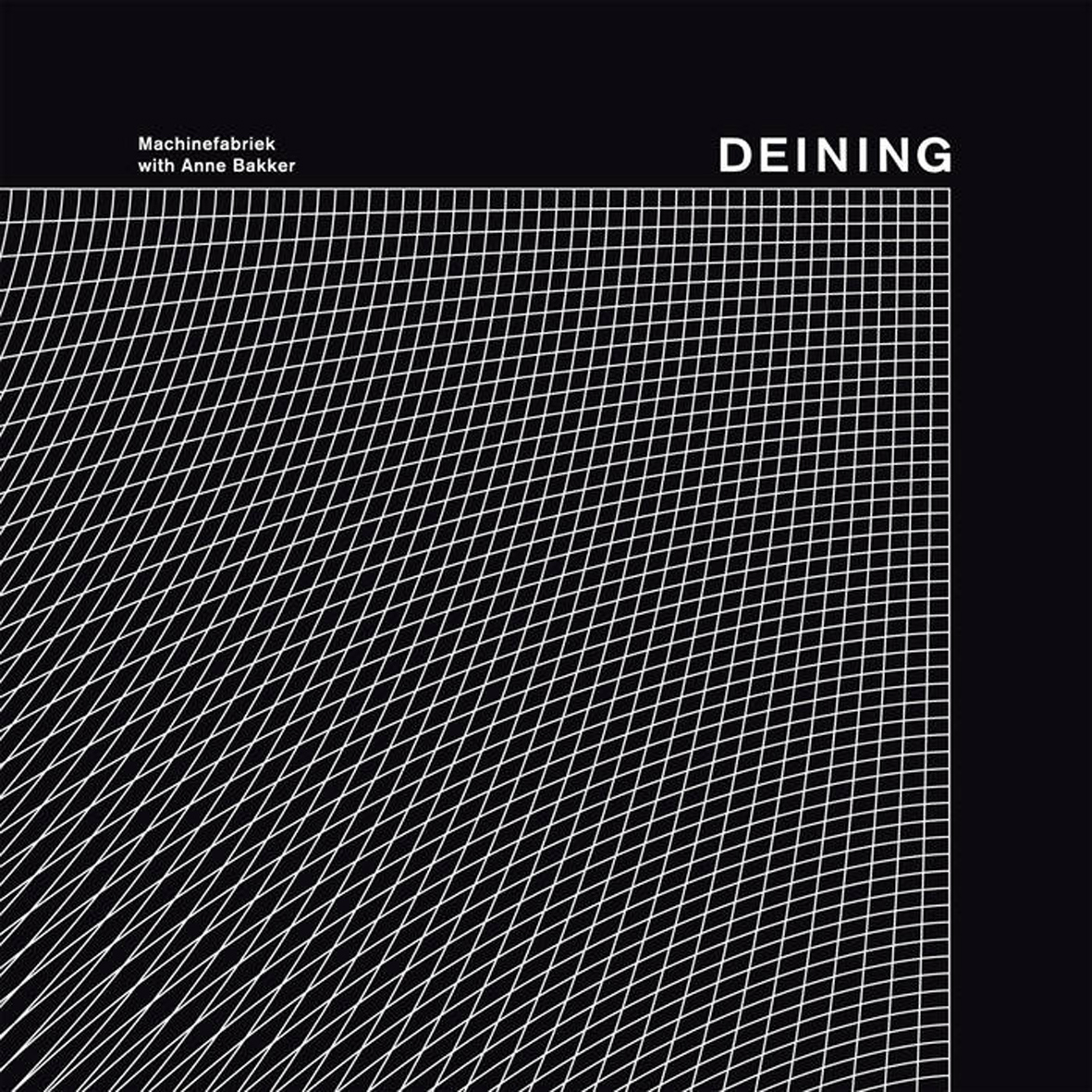 This collaborative EP with violinist Anne Bakker is a unique entry in Rutger Zuyderveldt’s vast discography, as it is a 26-minute tour de force of nerve-jangling tension and sliding dissonance.  Deining (translating as "heave" or "commotion") definitely falls quite unambiguously and unapologetically into the "this is art, not entertainment" category.  That probably will make it a hard sell for most people (Rutger himself understatedly observed that the piece is "a tad bitter"), but it is nevertheless quite a fascinating piece for those of us with an appreciation (and high tolerance) for shifting, uncomfortably close harmonies (there are a lot of those here).  Also, it is very hard not to admire the beautiful symmetry and simplicity of this uncompromising experiment.
This collaborative EP with violinist Anne Bakker is a unique entry in Rutger Zuyderveldt’s vast discography, as it is a 26-minute tour de force of nerve-jangling tension and sliding dissonance.  Deining (translating as "heave" or "commotion") definitely falls quite unambiguously and unapologetically into the "this is art, not entertainment" category.  That probably will make it a hard sell for most people (Rutger himself understatedly observed that the piece is "a tad bitter"), but it is nevertheless quite a fascinating piece for those of us with an appreciation (and high tolerance) for shifting, uncomfortably close harmonies (there are a lot of those here).  Also, it is very hard not to admire the beautiful symmetry and simplicity of this uncompromising experiment.
 Perpetual frontrunners Natural Snow Buildings and My Cat is an Alien aside, the single most unique and transcendental album of 2015 was this full-length debut from Würzburg-based experimental folk duo Brannten Schnüre.  While previous releases were primarily focused upon crackling, ritualistic-sounding, and eerily beautiful abstract collages, Sommer im Pfirsichhain (Summer in Peach Grove) takes Christian Schoppik's "German hauntology" aesthetic to a whole new plane, sounding like nothing less than the ghost of a lovesick Weimar Republic busker who happened upon an accordion, an out-of-tune violin, and a battered four-track in the spirit world and somehow managed to mail the resultant album to the Aguirre office in Belgium.  As if that were not enough, Sommer improves upon that already appealing description by balancing its more macabre and experimental tendencies with an unexpected warmth, sweetness, and innocence.
Perpetual frontrunners Natural Snow Buildings and My Cat is an Alien aside, the single most unique and transcendental album of 2015 was this full-length debut from Würzburg-based experimental folk duo Brannten Schnüre.  While previous releases were primarily focused upon crackling, ritualistic-sounding, and eerily beautiful abstract collages, Sommer im Pfirsichhain (Summer in Peach Grove) takes Christian Schoppik's "German hauntology" aesthetic to a whole new plane, sounding like nothing less than the ghost of a lovesick Weimar Republic busker who happened upon an accordion, an out-of-tune violin, and a battered four-track in the spirit world and somehow managed to mail the resultant album to the Aguirre office in Belgium.  As if that were not enough, Sommer improves upon that already appealing description by balancing its more macabre and experimental tendencies with an unexpected warmth, sweetness, and innocence.
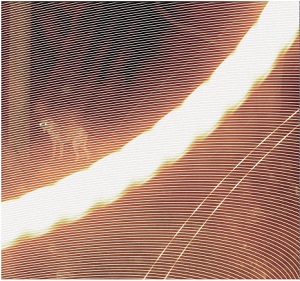 Scale, repetition, and variation have a way of bringing Morton Feldman to mind whether or not Feldman has anything to do with the matter at hand. The matter in this case is Mike Majkowski’s Bright Astonishment of the Night, the second of two full-length albums he released in 2015. The other, Neighbouring Objects, focused on the sympathetic resonances between instruments like piano, chimes, and double bass. This one focuses exclusively on the double bass over two long tracks, one of which, titled "Sleep and Oblivion," runs for over 48 minutes. Majkowski spends much of that time cycling through a series of techniques that emphasize the weight and extent of his instrument: the way it travels through the room, the way it melds into the walls at low frequencies and cuts through the air at higher ones, and the way those extremes relate. Resonance is still the subject of his work, but in this case it’s cast against a play of repetition and variation that holds equal weight.
Scale, repetition, and variation have a way of bringing Morton Feldman to mind whether or not Feldman has anything to do with the matter at hand. The matter in this case is Mike Majkowski’s Bright Astonishment of the Night, the second of two full-length albums he released in 2015. The other, Neighbouring Objects, focused on the sympathetic resonances between instruments like piano, chimes, and double bass. This one focuses exclusively on the double bass over two long tracks, one of which, titled "Sleep and Oblivion," runs for over 48 minutes. Majkowski spends much of that time cycling through a series of techniques that emphasize the weight and extent of his instrument: the way it travels through the room, the way it melds into the walls at low frequencies and cuts through the air at higher ones, and the way those extremes relate. Resonance is still the subject of his work, but in this case it’s cast against a play of repetition and variation that holds equal weight.
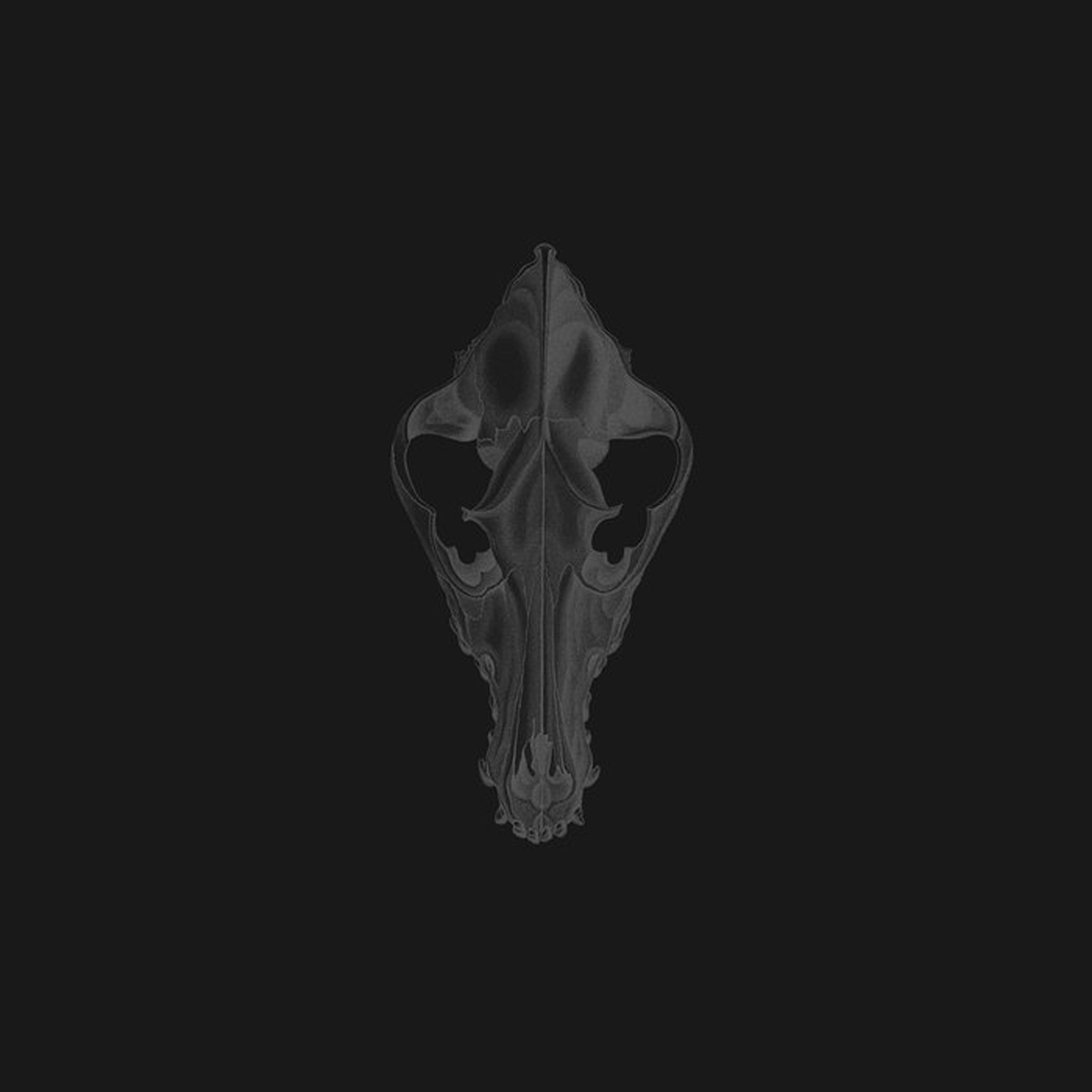 At this point, it is quite clear that The Inward Circles project is the home for Richard Skelton’s darker impulses, dealing primarily in brooding ambiance, churning violence, and grinding horror.  The big difference between Skelton and similar artists, however, lies in his scope and intensity.  This latest EP, a soundtrack to Skelton’s short film Beyond the Fell Wall, does not disappoint in those regards, as Skelton essentially creates an melancholy and spectral world, then ferociously rips it apart.  Unfortunately, it does not quite scale the heights of either The Inward Circles' debut or Skelton's amazing previous soundtrack (Memorious Earth), being a bit too short, bombastic, and single-minded to offer much more than a satisfyingly heavy catharsis.  It is still a solid and worthy release, but it is not quite "Richard Skelton" good.
At this point, it is quite clear that The Inward Circles project is the home for Richard Skelton’s darker impulses, dealing primarily in brooding ambiance, churning violence, and grinding horror.  The big difference between Skelton and similar artists, however, lies in his scope and intensity.  This latest EP, a soundtrack to Skelton’s short film Beyond the Fell Wall, does not disappoint in those regards, as Skelton essentially creates an melancholy and spectral world, then ferociously rips it apart.  Unfortunately, it does not quite scale the heights of either The Inward Circles' debut or Skelton's amazing previous soundtrack (Memorious Earth), being a bit too short, bombastic, and single-minded to offer much more than a satisfyingly heavy catharsis.  It is still a solid and worthy release, but it is not quite "Richard Skelton" good.
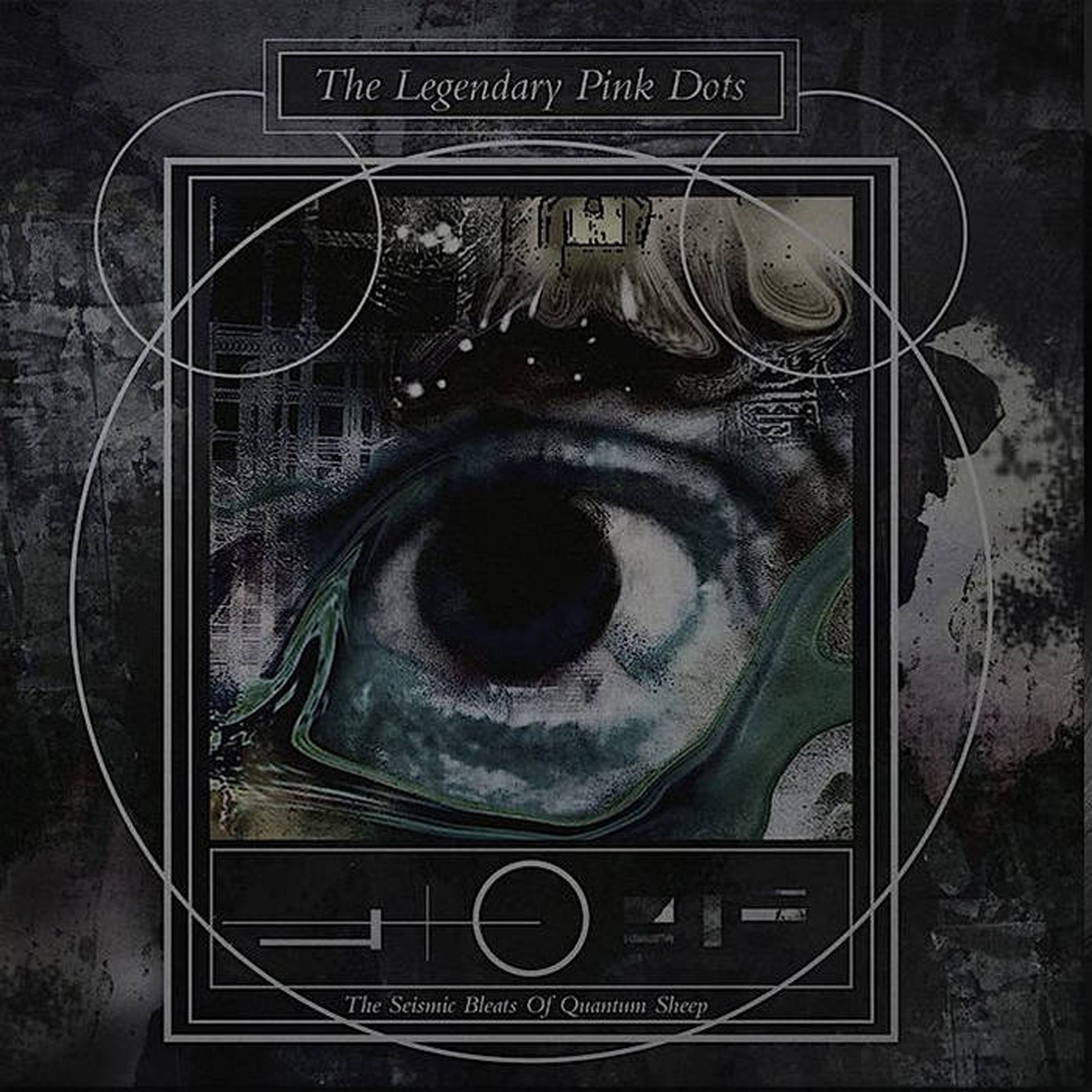 The strongest Legendary Pink Dots album of 2015 snuck in just under the wire as a digital release, with a delayed vinyl version expected in a few months from new Spanish label Abstrakce.  Intended as a "secret" sister album to the earlier Five Days, Quantum Bleats sounds a lot more like the work of an actual band, though it is no less fragmented and hallucinatory.  Everything feels a lot more deliberate, melodic, fully formed, and evocative this time around: there are a number of beautifully orchestrated passages, snatches of playful cabaret, and muscular bass lines lurking amidst all of the usual free-form psychedelic sprawl.  While it probably focuses a bit too much on the ambiguous no-man's land between "song" and "abstract experimentation" to rank among the Dots' best work, it is nevertheless quite clear that most of Edward Ka-Spel’s more inspired recent ideas found their way here.
The strongest Legendary Pink Dots album of 2015 snuck in just under the wire as a digital release, with a delayed vinyl version expected in a few months from new Spanish label Abstrakce.  Intended as a "secret" sister album to the earlier Five Days, Quantum Bleats sounds a lot more like the work of an actual band, though it is no less fragmented and hallucinatory.  Everything feels a lot more deliberate, melodic, fully formed, and evocative this time around: there are a number of beautifully orchestrated passages, snatches of playful cabaret, and muscular bass lines lurking amidst all of the usual free-form psychedelic sprawl.  While it probably focuses a bit too much on the ambiguous no-man's land between "song" and "abstract experimentation" to rank among the Dots' best work, it is nevertheless quite clear that most of Edward Ka-Spel’s more inspired recent ideas found their way here.
 Following up 2014's Der Totenkopf and last year’s reissue of The New Crimes, Moreno Daldosso’s newest album draws from both his past and present works, resulting in a dark and disturbing record that largely manages to achieve Daldosso’s artistic vision, with the exception of a few missteps along the way.
Following up 2014's Der Totenkopf and last year’s reissue of The New Crimes, Moreno Daldosso’s newest album draws from both his past and present works, resulting in a dark and disturbing record that largely manages to achieve Daldosso’s artistic vision, with the exception of a few missteps along the way.
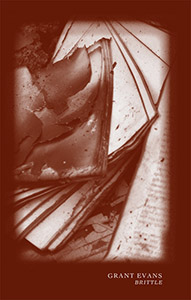 On this new tape, the prolific Evans draws from the styles he has worked in heavily before: noise, electro-acoustic, and ambient, but Brittle bears the mark of all without sounding like any one in particular. The two lengthy pieces cover a significant amount of sonic territory, and he makes remarkably diverse and complex compositions from a world of unidentifiable sound.
On this new tape, the prolific Evans draws from the styles he has worked in heavily before: noise, electro-acoustic, and ambient, but Brittle bears the mark of all without sounding like any one in particular. The two lengthy pieces cover a significant amount of sonic territory, and he makes remarkably diverse and complex compositions from a world of unidentifiable sound.
 This drab duo first emerged a few years back as bloodless hipster darlings, their aptly-titled 2013 Matador debut Impersonator overflowing with the sort of sentiments one might encounter in the first half of an Abilify commercial. Given frontman Devon Welsh’s incidental familial connection to the world of Twin Peaks, it’s mildly amusing how much of his gloomy music with Matthew Otto recalls Julee Cruise’s songs, albeit ones hastily covered by Coldplay.
This drab duo first emerged a few years back as bloodless hipster darlings, their aptly-titled 2013 Matador debut Impersonator overflowing with the sort of sentiments one might encounter in the first half of an Abilify commercial. Given frontman Devon Welsh’s incidental familial connection to the world of Twin Peaks, it’s mildly amusing how much of his gloomy music with Matthew Otto recalls Julee Cruise’s songs, albeit ones hastily covered by Coldplay.
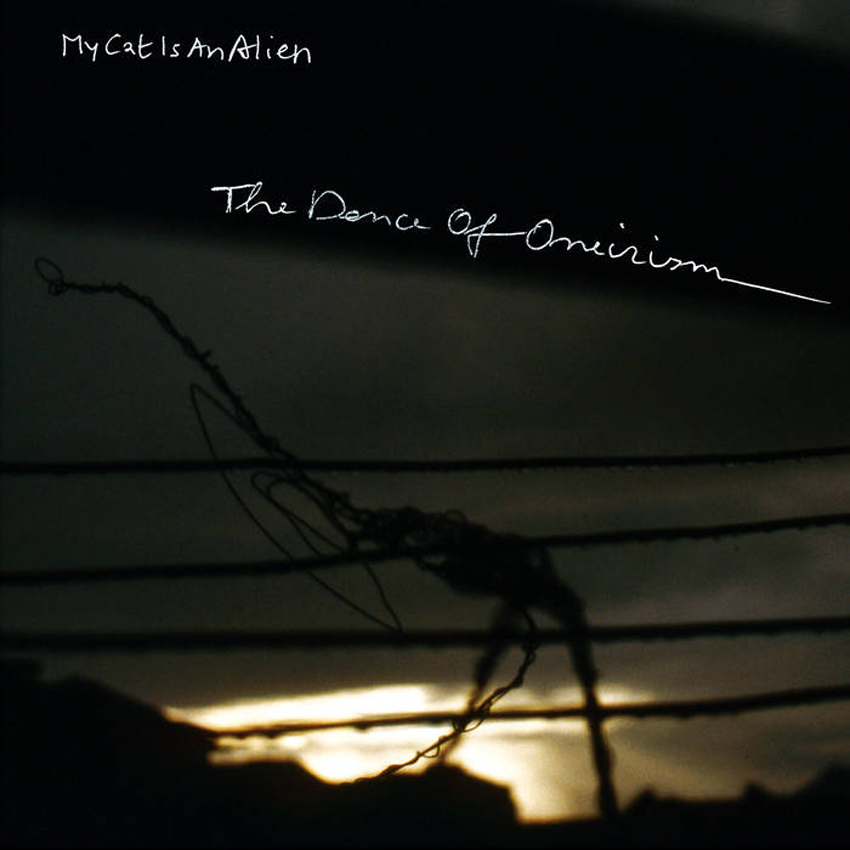 The Opalio Brothers have been on quite a hot streak in recent years, as both Psycho-System (2013) and Abstract Expressionism for the Ears (2014) were massive, tour de force plunges into hermetic, all-consuming, and completely otherworldly psychedelia.  The Dance of Oneirism masterfully continues the distillation of MCIAA's ever-evolving and singular vision, weaving its eerie, lysergic, and wonderfully disorienting spell in just under a hour (remarkably concise, given the duo's history).  As expected, it is yet another near-masterpiece of insular and visionary outsider genius and emphatically reaffirms my belief that absolutely nobody goes deeper or is more intent on scrambling minds than Roberto and Maurizio Opalio.
The Opalio Brothers have been on quite a hot streak in recent years, as both Psycho-System (2013) and Abstract Expressionism for the Ears (2014) were massive, tour de force plunges into hermetic, all-consuming, and completely otherworldly psychedelia.  The Dance of Oneirism masterfully continues the distillation of MCIAA's ever-evolving and singular vision, weaving its eerie, lysergic, and wonderfully disorienting spell in just under a hour (remarkably concise, given the duo's history).  As expected, it is yet another near-masterpiece of insular and visionary outsider genius and emphatically reaffirms my belief that absolutely nobody goes deeper or is more intent on scrambling minds than Roberto and Maurizio Opalio.
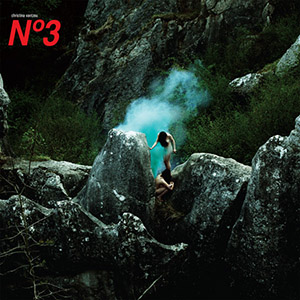 The culmination of two years of work and employing synthesizers, other electronics, and a 15 piece classical ensemble; N°3 is an ambitious and expansive work that is completely congruent with Vantzou’s aspirations. Lush and complex, the bulk of these pieces lie between epic drama and quiet intimacy, but are never anything but beautiful and compelling.
The culmination of two years of work and employing synthesizers, other electronics, and a 15 piece classical ensemble; N°3 is an ambitious and expansive work that is completely congruent with Vantzou’s aspirations. Lush and complex, the bulk of these pieces lie between epic drama and quiet intimacy, but are never anything but beautiful and compelling.
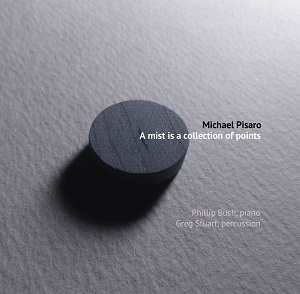 After seeing it performed by Phillip Bush, Greg Stuart, and Joe Panzner at the Roy and Edna Disney/CalArts Theater in downtown Los Angeles, the complexity in Michael Pisaro’s A Mist Is a Collection of Points cracked open. Scored for piano, percussion, and sine tones, the recorded version of A Mist presents itself transparently as a three-part composition with clear melodies and sharp edges. The piano is prominent, the sine tones thin and exact, the cymbals and crotales metallic, concentrated, centered. Their sounds are, in some ways, measured and containable, the opposite of a mist, which slips past the senses and confuses them. But watching Greg Stuart bow his crotales in the first section, seeing him react to Phillip Bush’s playing in the third, and searching for the places where the sine tones began and the acoustic resonance ended—that displaced and de-centered the entire piece. It turned its apparently fixed points into movable objects and transformed the music into a suspension of atoms and waves, detectable, though masked, in the superbly recorded and mastered document released by New World Records.
After seeing it performed by Phillip Bush, Greg Stuart, and Joe Panzner at the Roy and Edna Disney/CalArts Theater in downtown Los Angeles, the complexity in Michael Pisaro’s A Mist Is a Collection of Points cracked open. Scored for piano, percussion, and sine tones, the recorded version of A Mist presents itself transparently as a three-part composition with clear melodies and sharp edges. The piano is prominent, the sine tones thin and exact, the cymbals and crotales metallic, concentrated, centered. Their sounds are, in some ways, measured and containable, the opposite of a mist, which slips past the senses and confuses them. But watching Greg Stuart bow his crotales in the first section, seeing him react to Phillip Bush’s playing in the third, and searching for the places where the sine tones began and the acoustic resonance ended—that displaced and de-centered the entire piece. It turned its apparently fixed points into movable objects and transformed the music into a suspension of atoms and waves, detectable, though masked, in the superbly recorded and mastered document released by New World Records.



